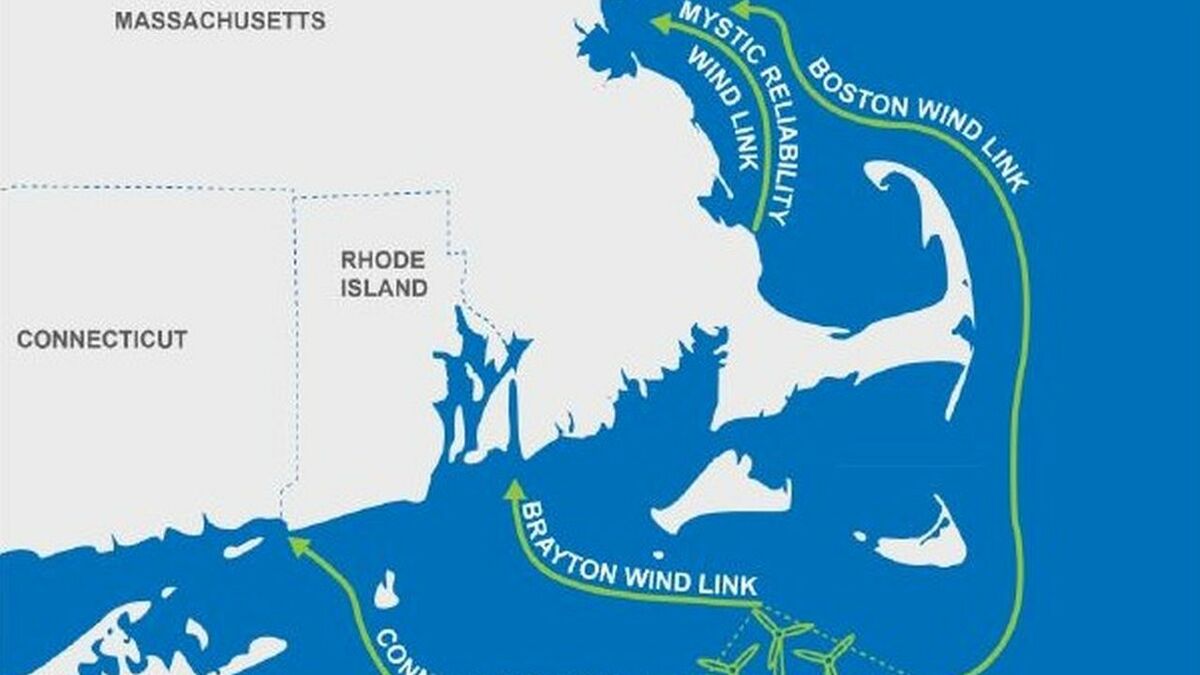Five New England States – Connecticut, Massachusetts, Maine, New Hampshire, and Rhode Island – have announced a joint initiative to explore investment in transmission infrastructure needed to better integrate large amounts of offshore wind.
The initiative will take into account other clean energy resources, and aims to improve the reliability, resilience, and affordability of the grid for the regions’ electricity customers.
The states have released a jointrequest for information(RfI) seeking comment on an initiative to integrate offshore wind and other resources in a cost-effective, reliable and efficient manner, including opportunities to leverage federal funding for New England transmission investments under the Infrastructure Investment and Jobs Act (IIJA) and Inflation Reduction Act (IRA).
The RfI highlights the fact that the process of planning, developing and building new transmission infrastructure takes many years. If states wish to integrate significant additional amounts of offshore wind in the early 2030s and secure access to federal funding opportunities, it is necessary to begin the process of identifying the most effective interconnection sites and begin planning and designing the transmission infrastructure necessary to permit offshore wind integration, avoid curtailments, maintain system reliability, meet state policy goals, and accomplish this in a cost-effective manner.
In a statement, the state said, “Having a clean, affordable, reliable regional electricity grid – supported by transparent decision-making processes and a transmission system that reliably accommodates duly enacted clean energy laws – is foundational to achieving our clean energy future. An integrated, reliable, and resilient, transmission system that will achieve the various New England states’ decarbonization targets, at least cost, and in a manner responsive to our state policies and the needs of our consumers.”
The states said the RfI will outline a conceptual framework for a modular offshore wind integration plan and seeking comments both on this plan and other infrastructure upgrades that will anticipate and meet consumer needs at least cost.
To advance the initiative, the participating state agencies will convene a technical meeting open and accessible to the public to be held on a date to be determined. Through this technical conference, the participating agencies will solicit comments and dialogue with all interested stakeholders on the modular offshore wind integration plan and a path to achieving it.
Major areas of focus for stakeholder dialogue will include: most effective points of interconnection for offshore wind, how to minimize land-based transmission upgrades that have traditionally been sited in overburdened and underserved communities, the design and implementation of high voltage direct current (HVDC) systems to provide the most efficient system structure, how to co-optimize transmission infrastructure to provide maximum consumer benefits, and how to reduce overall system cost and consumer impact.
The information gathered through the RfI will inform states’ decisions on whether to take further steps to procure or facilitate transmission investment, will assist planning activities and inform efforts to secure federal funding, including under IIJA, and otherwise support investment in infrastructure.
In a recent report, ‘Massachusetts Energy Pathways to Deep Decarbonization report, All Options scenario,’ it was assumed that up to 30 GW of offshore wind could be built in the 2040-2050 timeframe.
ISO-NE’s last major study of offshore wind integration, completed in 2020, indicated that as much as 5.8 GW of offshore wind additions have the potential to be interconnected into the existing grid without major new additional 345 kV reinforcements to the landside transmission system, but that any significant quantity of offshore wind beyond that amount may not be able to interconnect into the regional grid without significant transmission upgrades.
In addition, the most easily accessible interconnection points along the southern New England coast are already at or beyond their full capacity with those offshore wind projects under contract or review.
The states said they are also aware that the Department of Energy is preparing an Atlantic Offshore Wind Transmission Study (AOWTS) which will evaluate multiple pathways to offshore wind goals through coordinated transmission solutions along the US Atlantic Coast in the near term (by 2030) and long term (by 2050) under various combinations of electricity supply and demand while supporting grid reliability and resilience. The AOWTS is expected by the end of 2023.
In addition, ISO-NE is conducting multiple studies including the ‘2050 Transmission Study’ which is a comprehensive long-term regional transmission study designed to inform stakeholders of the amount and type of transmission infrastructure needed to cost-effectively integrate clean energy resources and meet New England states’ energy policy goals and requirements.
“This effort by the participating states is not intended to supplant any of these studies,” said they said. “Rather, the states will use information provided through this RfI process, and results of the studies referenced above and others, to inform possible future actions with the goal of accessing federal funds.”






